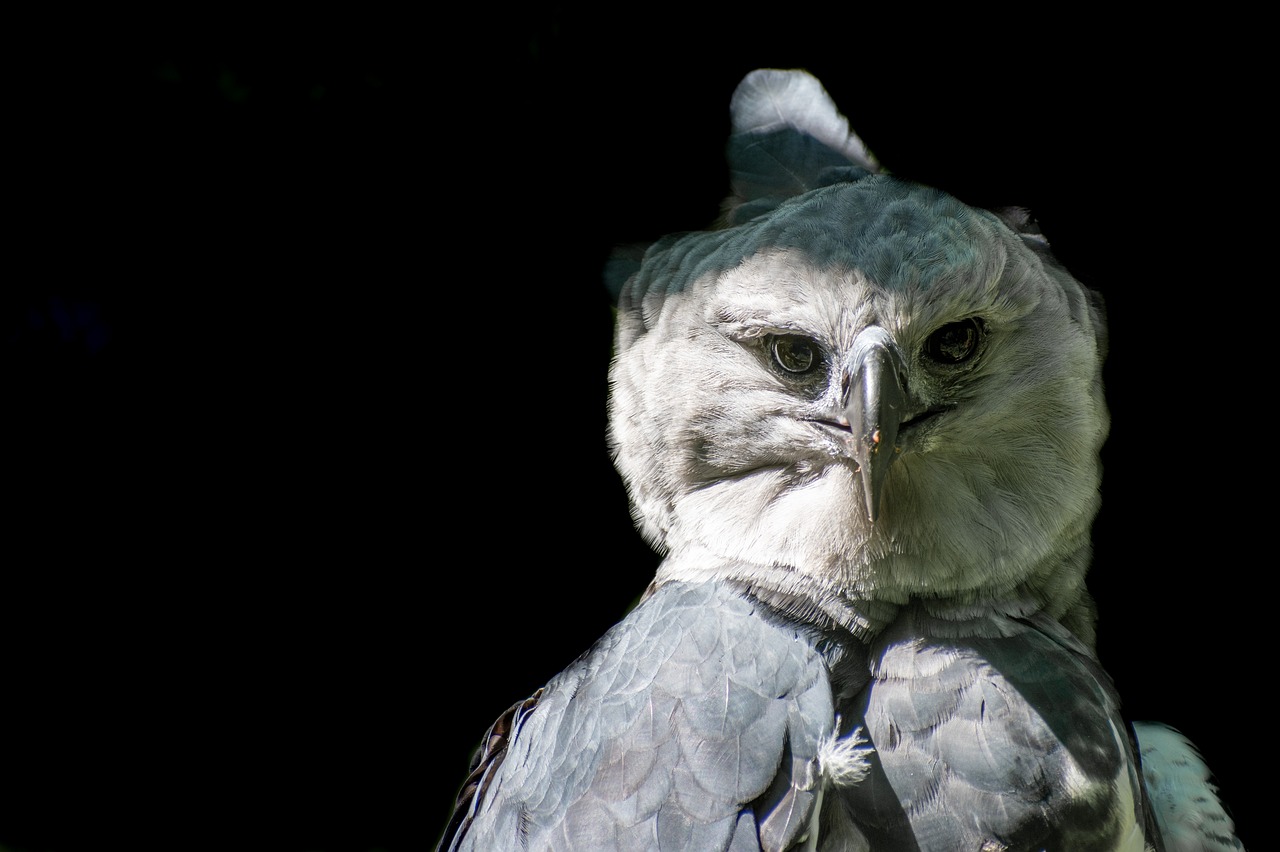Harpy Eagle: A Majestic Apex Predator
The Harpy Eagle (Harpia harpyja) is one of the most powerful and largest eagles in the world. Known for its striking appearance and formidable hunting skills, this raptor reigns as a top predator in the forests of Central and South America.
Physical Characteristics
Size: Harpy eagles are among the largest eagles, with females being significantly larger than males.
Height: 89 to 105 cm (35 to 41 inches)
Wingspan: 176 to 224 cm (5.8 to 7.3 feet)
Weight: Females: 6 to 9 kg (13 to 20 lbs), Males: 4 to 6 kg (8.8 to 13.2 lbs)
Plumage:
The harpy eagle has dark gray feathers covering its upper body, while the underside is white. It boasts a distinctive double crest of black feathers atop its head, giving it a unique and somewhat “crowned” look when raised.
Eyes and Beak: Its sharp, curved beak and large talons are adapted for hunting. The harpy eagle’s vision is extremely acute, allowing it to detect prey from great distances.
Habitat and Distribution
Harpy eagles primarily inhabit tropical lowland rainforests, where dense vegetation offers ample cover for hunting. They are found in regions ranging from southern Mexico through Central America and down to Brazil, Ecuador, and parts of northern Argentina.
Despite their wide range, harpy eagles are now considered near-threatened due to habitat destruction, particularly deforestation in the Amazon and Central American rainforests.
Diet and Hunting Behavior
Harpy eagles are apex predators with a diet mainly composed of tree-dwelling mammals. Their primary prey includes, Sloths, Monkeys (such as howler, capuchin, and spider monkeys), Opossums, and Porcupines
They have incredibly powerful talons, which can be up to 5 inches long, the largest of any eagle species. This allows them to snatch prey from tree branches with lethal precision.
Harpy eagles hunt by perching quietly and scanning for movement in the canopy before launching a surprise attack.
Reproduction and Lifespan
Harpy eagles build large nests high in the canopy of tall trees, often selecting ceiba or kapok trees. The nests can be up to 1.2 meters (4 feet) wide and are reused for several breeding cycles.
The breeding cycle is slow, with females laying a single egg every 2 to 3 years. Both parents share the responsibility of caring for the chick, which fledges after about 6 months but may remain dependent on the parents for food for up to a year.
In the wild, harpy eagles live up to 25 to 35 years. In captivity, they can live longer due to the absence of predators and consistent food supply.
Conservation Status
The International Union for Conservation of Nature (IUCN) lists the harpy eagle as Near Threatened. Its population is declining due to habitat loss caused by logging, agricultural expansion, and human encroachment.
Conservation efforts are underway, focusing on preserving their natural habitat and educating local populations about the eagle’s ecological importance.
Organizations like the Harpy Eagle Conservation Program work to monitor wild populations and establish breeding programs in captivity to prevent extinction.
Interesting Facts
-Harpy eagles are named after the harpies of Greek mythology, which were winged spirits known for their speed and ferocity.
-Despite their size, their broad wings and relatively short wingspan make them agile hunters in dense forests.
-They rarely soar above the canopy, preferring to remain hidden among the trees.
-The talons of a harpy eagle are comparable in size to a grizzly bear’s claws.
Final Thoughts
The harpy eagle is a symbol of power and majesty in the tropical rainforests where it resides. As one of the largest and most formidable birds of prey, its role in maintaining the ecological balance of its environment is crucial.
Protecting this magnificent species requires a collective effort to preserve its habitat and raise awareness about its plight.

